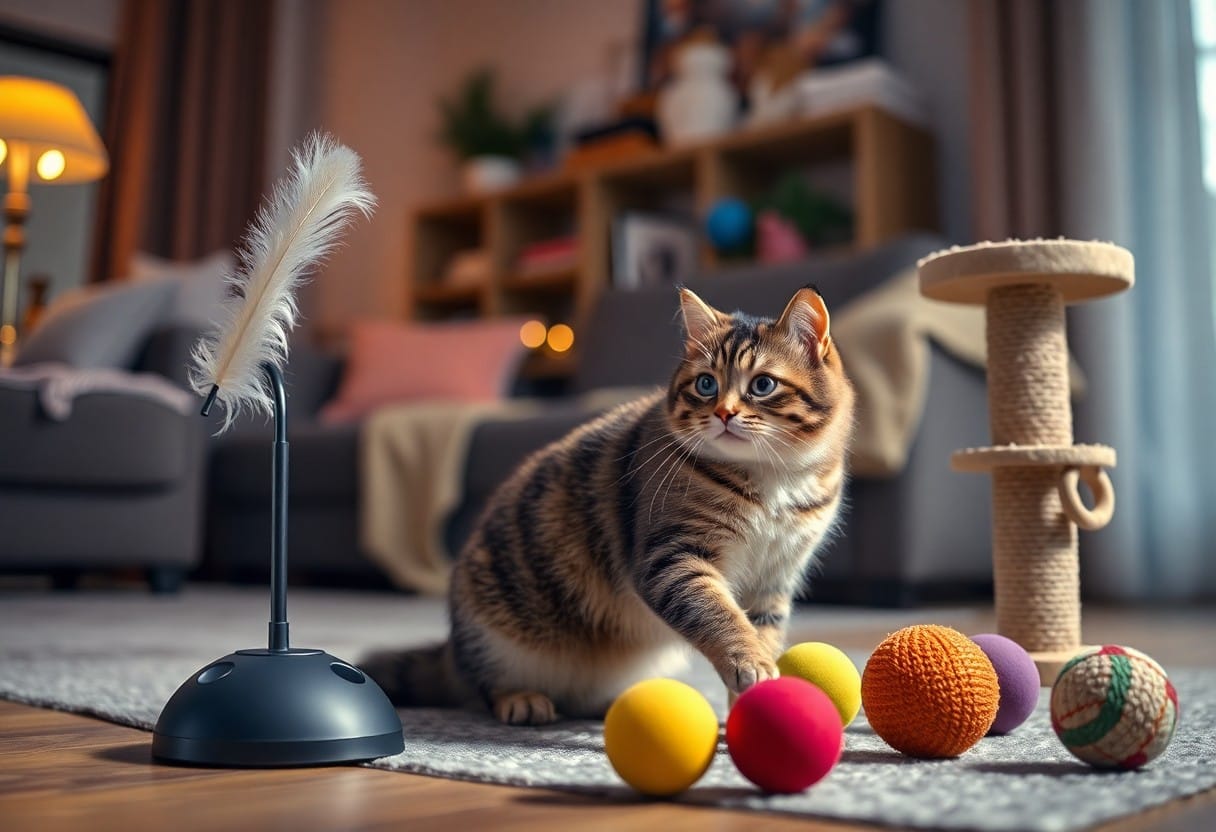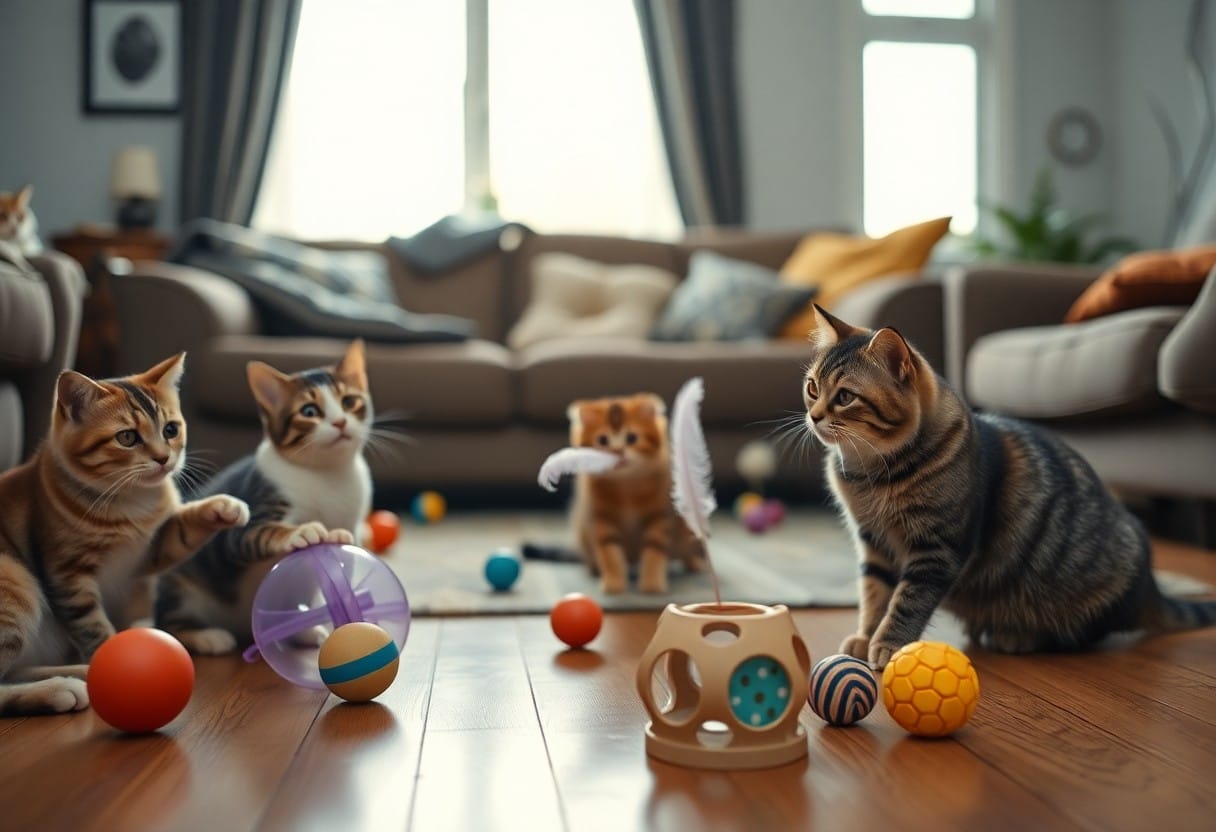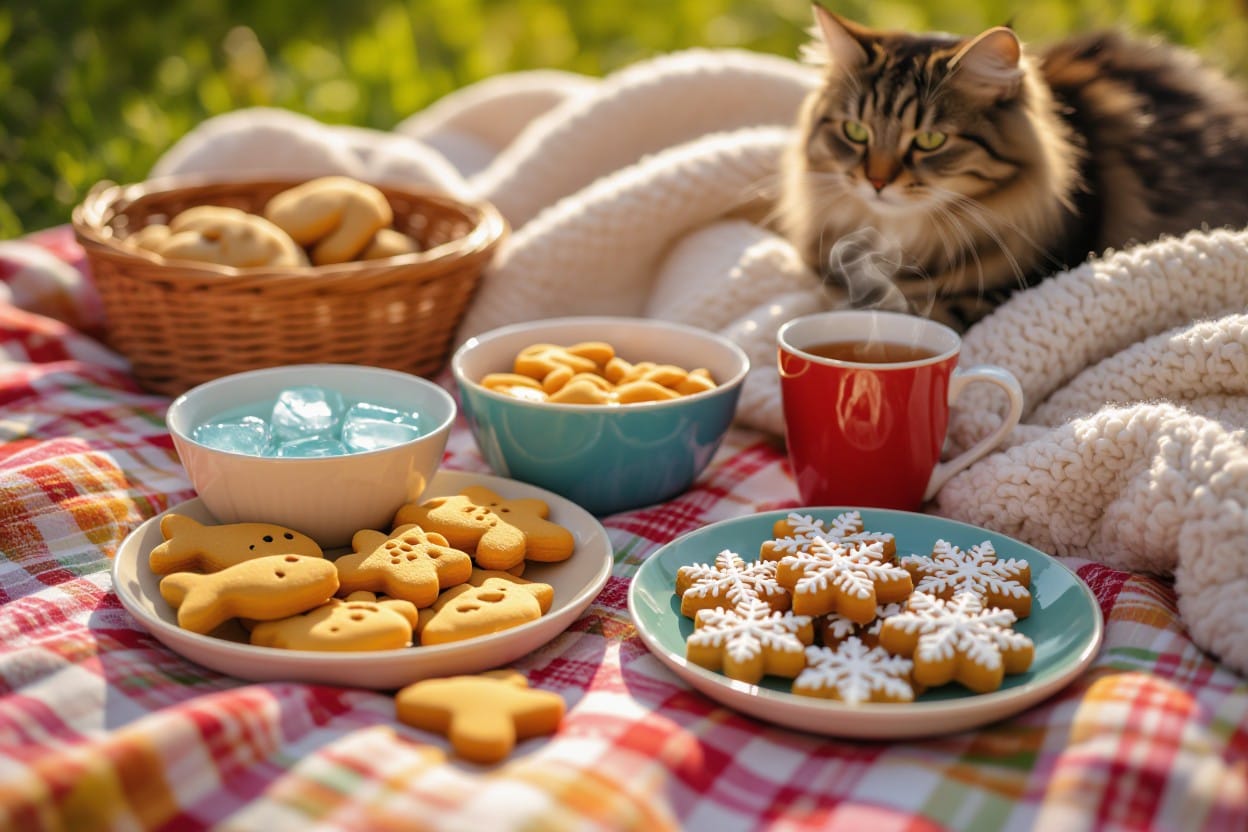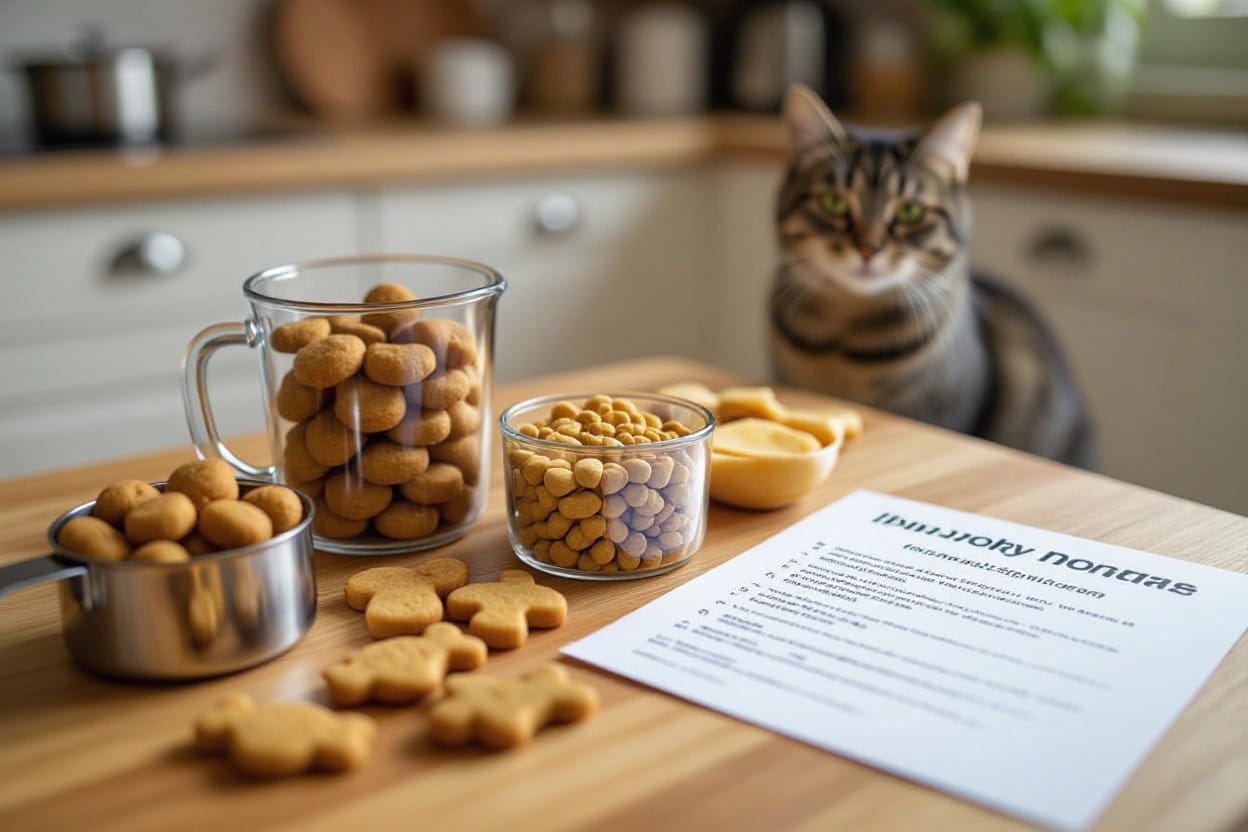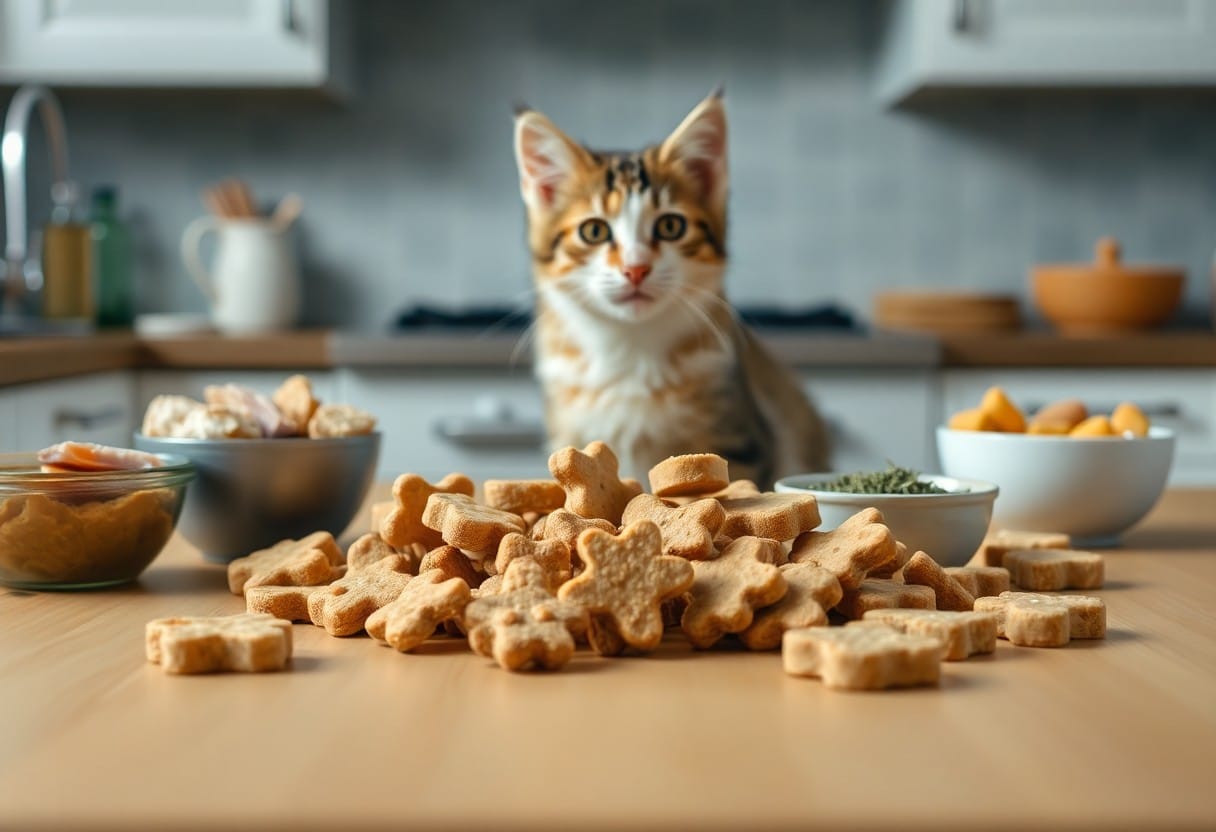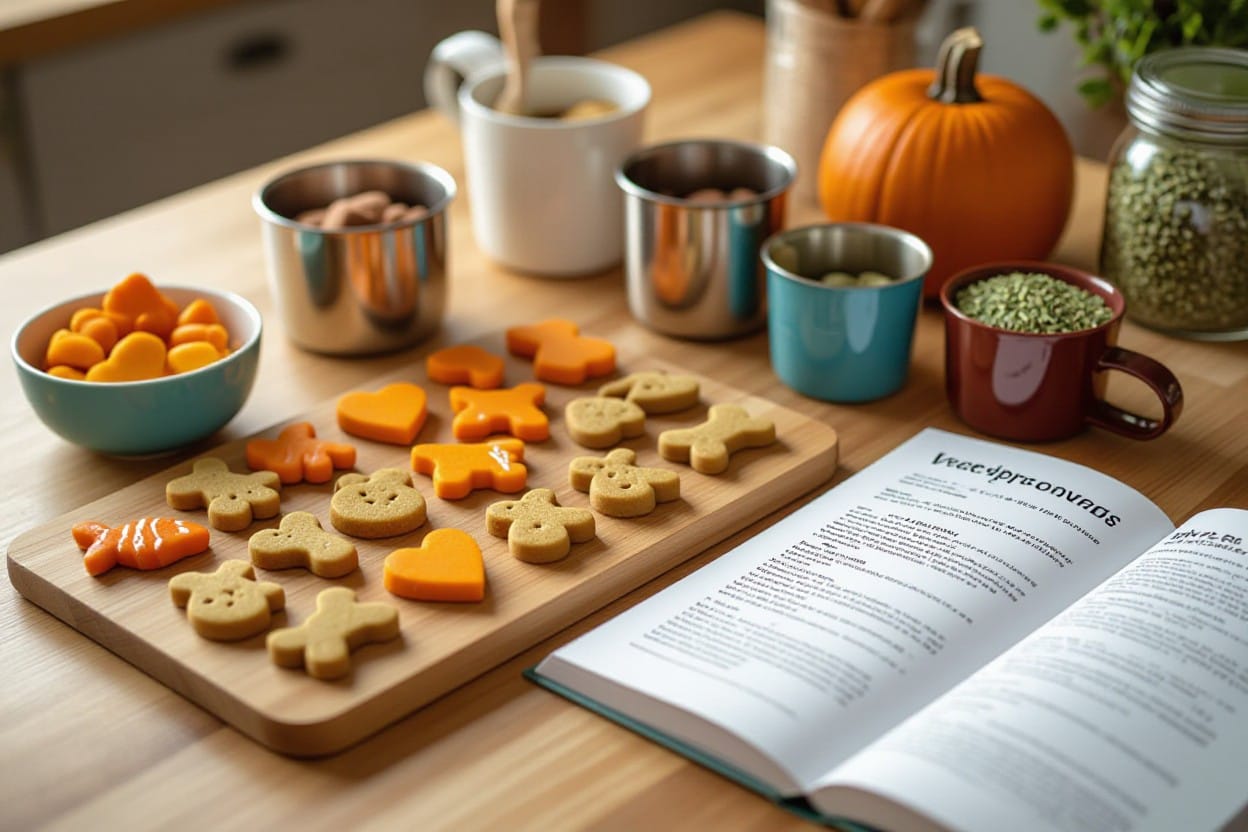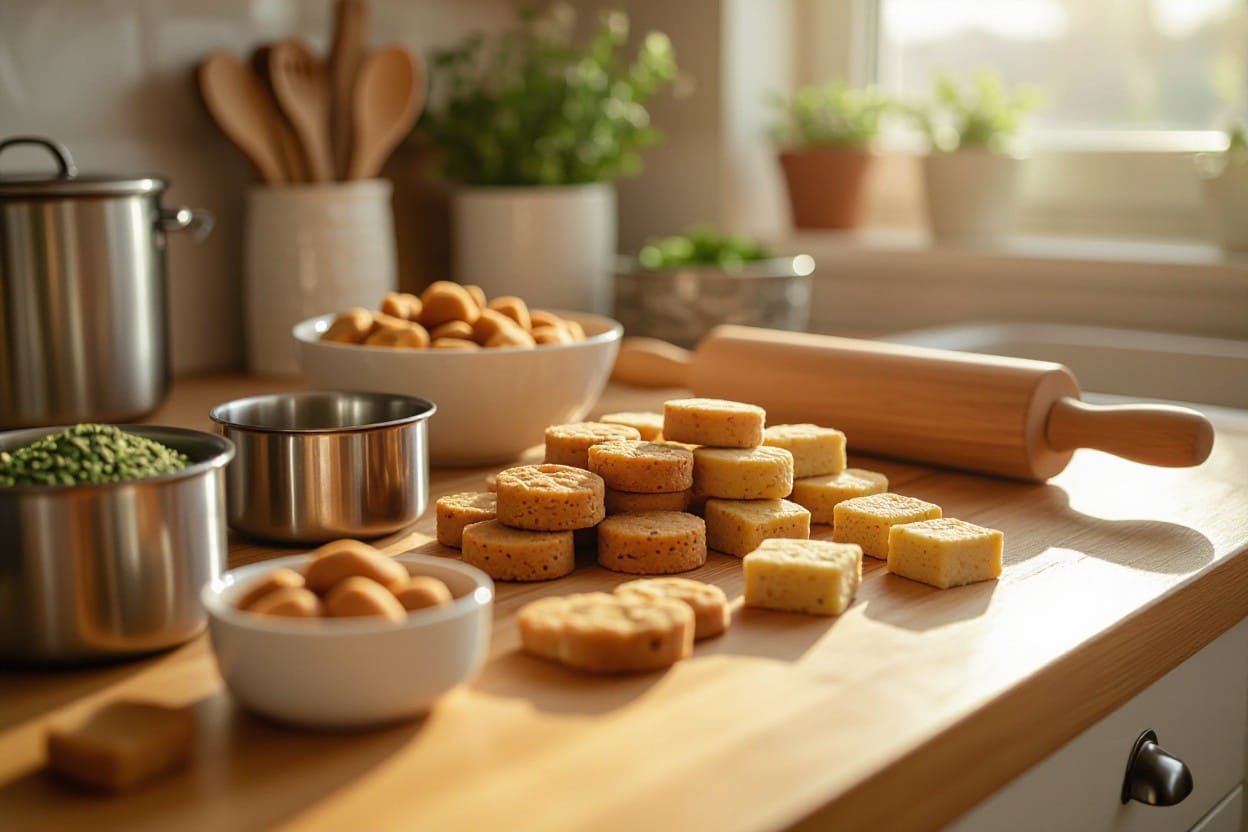Experiment with novel recipes for wholesome cat treats to enhance your feline’s diet and overall health. By creating your own treats, you can ensure they are made from high-quality ingredients, free from harmful additives often found in commercial products. This not only allows you to cater to your cat’s specific dietary needs but also keeps your pet engaged with exciting flavors and textures. Plus, bonding with your cat during the treat-making process can be a rewarding experience. Your efforts can lead to a happier, healthier cat while saving you money on overpriced store-bought options.

Key Takeaways:
- Experimenting with novel recipes allows you to tailor treats to your cat’s specific dietary needs and preferences, enhancing their overall health and happiness.
- Creating homemade cat treats can help you avoid harmful additives and preservatives often found in commercial products, ensuring a more wholesome snack for your furry friend.
- Trying out new recipes can be a fun bonding activity and a way to provide mental stimulation for both you and your cat, encouraging a positive feeding experience.
The Nutritional Benefits of Homemade Cat Treats
Creating homemade cat treats grants you complete control over the ingredients, ensuring that each treat is tailored to meet your cat’s unique dietary needs. Using fresh, wholesome ingredients not only avoids the preservatives and fillers often found in commercial products but can also enhance the nutritional value of the treats. Incorporating protein-rich meats, wholesome grains, and vital vitamins means your cat will receive optimal nutrition and enjoy tasty snacks that support their overall health.
Understanding the Nutritional Needs of Cats
Your cat requires a balanced diet that includes high-quality protein, vital fatty acids, vitamins, and minerals. Unlike omnivores, felines are obligate carnivores, meaning their bodies are optimized for processing animal protein rather than plant-based nutrients. They also need taurine, an amino acid critical for heart health and vision, along with specific vitamins like A and B12. By understanding these requirements, you can ensure that your homemade treats not only satisfy their palate but also provide vital nutrition.
Comparing Store-Bought Versus Homemade Options
When evaluating between store-bought and homemade cat treats, the differences become evident. Store-bought options often contain fillers, artificial flavors, and unexpected additives, which can compromise your cat’s health. In contrast, homemade treats allow you to use fresh, quality ingredients—resulting in a more nutritious and indulgent experience for your feline friend. Plus, with homemade treats, you can easily avoid allergens or ingredients that may not sit well with your cat’s tummy.
Comparison: Store-Bought vs. Homemade Cat Treats
| Store-Bought Treats | Homemade Treats |
| Often contain artificial additives and preservatives. | Prepared with natural, whole ingredients tailored to your cat’s diet. |
| Less control over specific nutritional content. | You choose ingredients to meet special dietary needs. |
| Higher cost for premium brands. | More economical when made from bulk ingredients. |
Choosing homemade treats can elevate your cat’s diet while offering you peace of mind regarding their health. Crafting treats in your kitchen enables you to experiment with a variety of flavors and textures that your cat will love, plus it spares you from the mystery of unfamiliar ingredients often found in pre-packaged options. By opting for homemade recipes, you provide your cat with wholesome nutrition without emptying your wallet.
Creative Ingredients That Cat Owners Should Explore
Exploring creative ingredients can transform your cat’s snack time from mundane to exciting. By incorporating options like pumpkin, which is high in fiber and aids digestion, or flaxseed, a source of omega-3 fatty acids, you can significantly enhance the nutritional value of your homemade treats. Additionally, ingredients like spirulina and coconut oil can provide beneficial properties that many commercial treats lack. Each new ingredient opens the door to diverse textures and flavors, allowing you to discover what your cat prefers while ensuring their diet remains balanced and healthy.
The Role of Superfoods in Feline Diet
Superfoods play a pivotal role in enhancing your cat’s overall health. Ingredients such as chia seeds, blueberries, and kale are packed with important vitamins, minerals, and antioxidants that support immune function and promote healthy skin and coat. Including these superfoods in your homemade treats means not only treating your cat but also contributing to their long-term wellness. For example, adding just a teaspoon of chia seeds can significantly boost the fiber content, aiding digestion while keeping your cat feeling full and satisfied.
Innovative Flavors Cats Can’t Resist
Cats are notorious for their discerning palates, but introducing innovative flavors can entice even the pickiest eaters. Combining classic flavors like chicken or tuna with less traditional additions such as catnip or cheese can create an unparalleled taste experience. Cats respond enthusiastically to these unique combinations, and ingredients like salmon oil or beef broth can elevate the taste profile of your treats further. Experimenting with flavors not only broadens their culinary horizons but also can strengthen your bond as you discover their preferences through fun and creative recipes.
The Science of Texture: How It Influences Feline Palate
The texture of treats plays a significant role in your cat’s enjoyment and acceptance of the snacks you prepare. Cats, being obligate carnivores, have specific preferences that are strongly influenced by texture. Whether they prefer a crunchy bite or a chewy morsel can dictate their overall interest in a particular treat. Additionally, the texture can affect how cats perceive flavors, adding another layer to their culinary experience.
Why Texture Matters to Cats
The significance of texture in your cat’s food choices can’t be overstated. Cats often rely on tactile stimuli to gauge the palatability of their food. A rough or crunchy surface may appeal to their natural instinct to bite and chew, mimicking their behaviors in the wild. Alternatively, a softer, smoother texture can be comforting and satisfying, especially for older cats or those with dental issues.
Experimenting with Crunchy vs. Chewy Treats
Varying the textures of cat treats not only keeps things interesting for your feline friend but also promotes optimal dental health. Crunchy treats can help reduce plaque and tartar buildup, while chewy treats can provide a satisfying mouthfeel that stimulates their gums. Experimenting with both can reveal surprising preferences—you might find that your cat gravitates toward crunchy chicken-flavored bites over softer salmon ones or vice versa. Consider mixing the two textures in a single treat recipe for added variety, creating a dual sensation that keeps your cat engaged and excited during snack time.
Tips for Safe and Healthy Treat Experimentation
- Always use fresh, high-quality ingredients.
- Introduce one new ingredient at a time to gauge your cat’s reaction.
- Consult with your veterinarian about any dietary restrictions.
- Avoid foods that are toxic to cats, such as chocolate and onions.
- Monitor your cat’s overall health and behavior after introducing new treats.
Assume that you’ll be cautious and informed during this exciting culinary adventure, ensuring your treats are delightful and safe.
Common Ingredients to Avoid
Certain ingredients should never make their way into your cat’s treats. Foods like chocolate, onions, garlic, grapes, and raisins can be toxic to cats, potentially leading to serious health issues. Even common seasonings and certain dairy products may cause digestive problems. Keep your recipes simple and always verify the safety of unfamiliar ingredients before you incorporate them into your cat’s treats.
Guidelines for Proper Portion Sizes
Understanding portion sizes is necessary to keep your feline friend healthy while enjoying their treats. Generally, treats should only account for about 10% of your cat’s daily caloric intake. This means if your cat requires 200 calories per day, aim for treats that total 20 calories or less. Breaking down this guideline helps you calibrate the amount of each ingredient you use in your recipes, ensuring that indulgence doesn’t lead to weight gain.
Establishing the right portion sizes empowers you to reward your cat without compromising their health. A guideline of 10% of daily caloric intake ensures your cat maintains a balanced diet. For example, if you’re using a new recipe that yields 20 treats, consider making them around 2 calories each if your cat’s daily needs are 200 calories. Always pay attention to your cat’s overall weight and activity level, adjusting as necessary. Regularly reassessing portion sizes can also enhance treat variety while keeping your pet fit and happy.
Engaging Cats Through Treat-Making: A Bonding Experience
Making treats for your feline friend not only satisfies their taste buds but also enhances your bond with them. As you prepare the ingredients and mix them, your cat becomes curious, engaging with the process. This interaction fosters a sense of companionship and shared experience, creating a deeper emotional connection. Observing your cat’s excitement when you present the homemade treats reinforces their trust in you, transforming treat-making into a rewarding activity for both of you.
The Emotional Benefits of Homemade Treats
Creating homemade treats can lead to enhanced emotional well-being for both you and your cat. The act itself is often calming and rewarding, as you see your cat’s joy in tasting something made with love. Cats can sense your positive energy and attention during the treat-making process, which strengthens your relationship. This emotional bond is vital for their happiness and can lead to a more content and affectionate cat.
Fun Recipes for Interactive Cat Treats
Interactive cat treats can turn treat time into an engaging experience. Simple recipes like catnip-infused balls or tuna muffins encourage your cat to explore flavors and textures while allowing you to participate in their excitement. Creating toys that dispense treats with a bit of play—such as stuffed toys or treat puzzles—adds an extra layer of fun, stimulating your cat both mentally and physically.
Interactive treats can be as charming as they are functional. For instance, you might create a treat-filled sock toy that requires your cat to paw and nibble to release the goodies inside. You can use ingredients like shredded chicken or fish, combining them with their favorite catnip. Such special recipes bring playfulness to treat time, enabling your cat to enjoy a rewarding hunt while also promoting a healthy lifestyle through active play and mental stimulation.
To wrap up
Hence, experimenting with novel recipes for wholesome cat treats allows you to custom-tailor nutrition to your feline friend’s specific needs while also providing variety to their diet. By using fresh, high-quality ingredients, you can enhance your cat’s health, strengthen your bond with them, and keep mealtime exciting. Moreover, creating these treats at home can be a rewarding and enjoyable experience for you, giving you the opportunity to understand your cat’s tastes and preferences. So, get creative in the kitchen and watch your feline delight in your homemade creations!
Q: What are the benefits of experimenting with novel recipes for cat treats?
A: There are numerous benefits to trying out new recipes for wholesome cat treats. First, it allows you to explore various ingredients that can provide vital nutrients and health benefits to your cat. Different ingredients can support digestion, boost immunity, and promote healthy fur and skin. Additionally, experimenting helps you to better understand your cat’s preferences, allowing you to tailor treats specifically to their tastes and dietary needs. This personalized approach can lead to happier and healthier pets.
Q: How can novel recipes enhance my cat’s diet?
A: Novel recipes can significantly enhance your cat’s diet by incorporating diverse ingredients that they may not receive from store-bought treats. Homemade treats enable you to add unique proteins, whole grains, and fresh fruits or vegetables, all of which can introduce new flavors and nutrients. This variety not only keeps your cat’s diet exciting but also encourages them to explore and enjoy a broader range of food sources, which can ultimately contribute to their overall well-being.
Q: Is it safe to create my own cat treat recipes?
A: Yes, creating your own cat treat recipes can be safe as long as you use safe and cat-friendly ingredients. It’s important to research which foods are suitable for felines and to avoid toxic ingredients like onions, garlic, and chocolate. Additionally, homemade treats allow you to skip artificial additives and preservatives that can be harmful in large quantities. Always introduce new treats gradually and in moderation to monitor how your cat reacts to the changes. Consulting with a veterinarian can also provide guidance on crafting safe and nutritious recipes.

